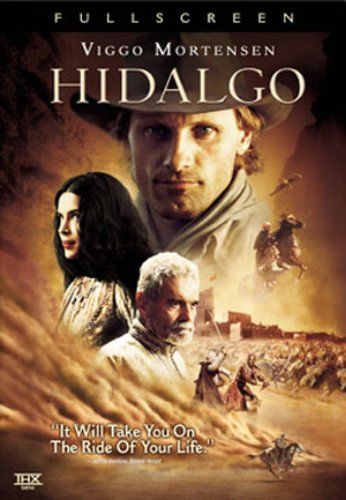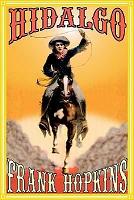

| Home Links Contact |
| 1887-88 1891-92 1892 1902-03 1904 |
|
|
What makes the story unique and makes Hidalgo unique is the fact that it is true. Viggo Mortensen, interviewed in Sand & Celluloid, DVD special feature
Anyone able to identify a single shred of independent evidence in support of either Frank Hopkinsís memoirs or the movie which it inspired, particularly with regard to the three decades which he claims to have spent as a star performer with Buffalo Bill, is cordially invited to share his or her findings!

To aficionados of the adventure fantasy genre, this 2004 blockbuster comes highly recommended. Too bad though that the same expertise which clearly went into the special effects didnít extend to the historical research! The film is only loosely based on Frank T. Hopkinsís tedious and error-laden Ďmemoirsí.
It is memorable for Lakota dialogue during the early part of the film, a reconstruction of the massacre at Wounded Knee and imaginative representations of scenes from the Wild West show, including the Custerís Last Fight and Deadwood Stage sequences. Authentic music from the Cowboy Band - Karl L. Kingís On the Warpath and The Passing of the Red Man - is a further commendable feature. It is rather odd, however, to find Buffalo Bill acting as his own Ďoratorí. It is also a bit strange to see Annie Oakley performing with a revolver. The screenplay places the show, eight months after Wounded Knee, on a tour of the eastern United States, including the specific named venues of Boston, Cleveland, Pittsburgh and New York. This is precisely when - late August / early September 1891 - the show, in reality, was well into its 1891-92 tour of Germany, Belgium, England, Wales and Scotland. If the period of eight months is to be taken exactly, it is a matter of clear historical record that the show was actually in Nottingham and poised to move on to Leicester. The fictitious role of Chief Eagle Horn, represented as the slayer of Custer and routinely abused by American audiences, is obviously modelled on Sitting Bull, who had toured with the show for four months during 1885. It is no accident that in one scene Eagle Horn comments that Buffalo Bill has promised him rock candy in Pittsburgh; the real Sitting Bull had a similar weakness.
None of these aberrations is attributable to Hopkins, whose ludicrous manuscript, however, contains myriad eccentricities all of its own. By his own account, not only was he a legend of the endurance riding circuit, he was also a leading attraction with Buffalo Billís show for more than thirty seasons.
How curious that no one can find any other record of him!
You may be delighted to learn that one of Buffalo Billís tours of Great Britain, hitherto overlooked by conventional historians, was somehow shoehorned into the early summer of 1888, at some time after 6th May and all in time for the (documented) opening in New York on the 30th of the same month, which involved three transatlantic crossings, and with a trip to Spain thrown in, no doubt to occupy all the spare time the company would otherwise have had on its hands:
I crossed the ocean with a number of horses for the show, including that intelligent colt of mine called Pardner. The show played in many towns of England and Scotland, then on to Spain and there Cody put on a race of one hundred miles; this was free for all. p. 82 of Hidalgo, by Frank T. Hopkins
Foreword by Professor David Dary
Edited by CuChullaine and Basha OíReilly
www.horsetravelbooks.com 2003
Later (p. 172), it transpires that it wasnít actually a tour of England and Scotland at all but of Scotland and Wales! This is entirely typical and just one of several serious internal inconsistencies which would have to be resolved before we could even begin to consider the Hopkins narrative as sober history.
As anyone in Govan will tell you, it just DISNEY add up!
The SNBBA is indebted to the Long Ridersí Guild and to the stellar cast of (real, identified) experts whom it engaged for the specific purpose of comprehensively and conclusively exposing the Frank T. Hopkins / Hidalgo Ďlegendí as a patent fabrication - and not a very clever one at that.
I further acknowledge an omission of my own. Some mention of this story should have been included in the concluding chapter of Your Fathers the Ghosts, False Trails, but wasnít.